
Blog

November 12, 2024
Your bathroom vanity countertop plays a crucial role in defining the style and functionality of your space. In a bustling city like Chicago, where homeowners prioritize both aesthetics and durability, choosing the right countertop for your bathroom is essential. Here’s a guide to selecting a stylish and durable vanity countertop that will elevate your bathroom and stand the test of time. 1. Why Choose Durable Materials for Your Bathroom Vanity? Bathrooms are high-moisture environments, and countertops are subject to daily use. From water splashes and cosmetics to hot styling tools, a bathroom countertop needs to withstand a lot. For Chicago homeowners, durable materials like quartz, granite, and solid surface are ideal choices. These materials are resistant to scratches, stains, and water damage, making them perfect for long-lasting beauty and functionality in your bathroom. Quartz is especially popular because it’s non-porous, meaning it won’t absorb water or harbor bacteria—a key feature for bathroom hygiene. It’s also available in a wide range of colors and patterns, from subtle neutrals to bold veining that mimics marble. Granite is another resilient option, offering natural beauty and unique patterns that add character to any bathroom. 2. Consider Low-Maintenance Options for a Busy Lifestyle In a fast-paced city like Chicago, homeowners often prefer low-maintenance materials that allow them to spend more time enjoying their homes and less time on upkeep. Quartz is a top choice because it doesn’t require sealing, and a simple wipe-down with a damp cloth keeps it looking pristine. Solid surface countertops, like Corian, also provide a seamless and stain-resistant option that’s easy to clean and repair if scratched. While marble is undeniably beautiful, it’s more porous and prone to staining, making it a higher-maintenance choice. For those who love the look of marble but want something more practical, quartz with marble-inspired patterns offers the best of both worlds: the elegance of marble with the ease of quartz. 3. Optimize Your Bathroom’s Style with Unique Colors and Textures Your bathroom countertop can be a stylish focal point, enhancing the overall aesthetic of the space. Modern bathrooms often favor clean lines and subtle elegance, so choosing a neutral countertop color, such as white, gray, or beige, can provide a timeless look. However, if you’re seeking something bolder, consider a rich, dark quartz or granite countertop to add depth and sophistication. Texture is another way to add style to your vanity countertop. Polished finishes give a smooth, shiny appearance that reflects light beautifully, creating a bright and airy feel in smaller bathrooms. Matte finishes, on the other hand, have a soft, understated elegance and are more forgiving of smudges and fingerprints. 4. Maximize Functionality with Custom Vanity Countertops Custom vanity countertops can be designed to fit your bathroom perfectly, whether you have a compact city condo or a spacious suburban home. Custom options allow you to select the exact dimensions, edge profiles, and sink configurations to optimize your countertop for both style and function. For smaller bathrooms, consider a floating vanity with a slim countertop to make the space feel larger and more open. 5. Invest in Long-Term Value Upgrading your bathroom with a high-quality vanity countertop is an investment that adds value to your home. In Chicago’s competitive real estate market, a well-designed, stylish bathroom can make a strong impression on potential buyers. Quartz and granite countertops, known for their durability and appeal, offer excellent resale value and are widely regarded as premium choices. Transforming your Chicago bathroom with a stylish and durable vanity countertop is a fantastic way to enhance both beauty and function. By choosing a material that suits your lifestyle and design preferences, you can create a bathroom that feels like a luxurious retreat while holding up to daily use.
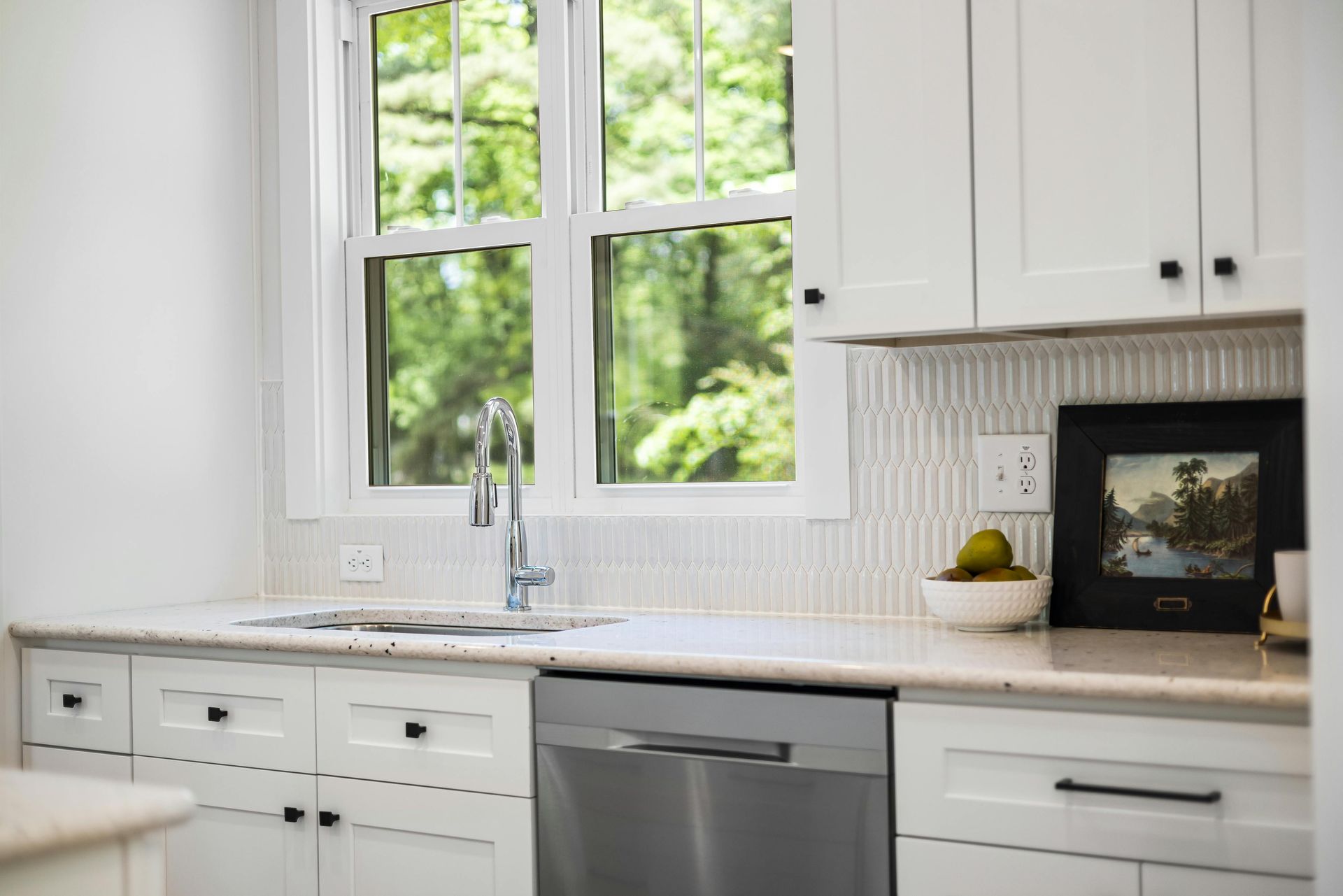
November 12, 2024
Choosing the right countertop for your Chicago condo or apartment is an exciting opportunity to elevate the style and functionality of your space. Urban dwellers have unique needs when it comes to home design: square footage is often limited, lifestyle is fast-paced, and aesthetic preferences are typically modern and chic. Here’s a guide to help you select the perfect countertop that aligns with your style and meets the demands of condo and apartment living in Chicago. 1. Consider Durability for High-Traffic Spaces In smaller spaces, the kitchen often doubles as a gathering area and workspace, which means your countertop needs to be both durable and functional. Quartz is a popular choice for Chicago homeowners due to its incredible durability and minimal maintenance. It’s non-porous, stain-resistant, and easy to clean, making it ideal for urban settings where time is a luxury. Solid surface materials, like Corian, also offer durability and can be easily customized to fit tight or oddly shaped spaces. 2. Prioritize Low Maintenance for Busy Lifestyles Living in Chicago means you’re likely juggling a busy schedule, so choosing a countertop that doesn’t require constant maintenance is key. Granite and quartz are excellent low-maintenance choices, as they only need occasional sealing (in the case of granite) or a simple wipe-down (in the case of quartz). Marble may look luxurious, but its high maintenance requirements make it less ideal for condo and apartment dwellers who may not have time for frequent upkeep. 3. Maximize Limited Space with Light Colors and Seamless Designs Many condos and apartments in Chicago have smaller kitchens, so it’s essential to choose a countertop color and style that can make the space feel larger and more open. Light-colored countertops, such as whites, creams, and light grays, reflect more light and create an airy feel, which helps maximize limited square footage. Opting for a seamless, unbroken design—without busy patterns or grout lines—can further enhance the sense of spaciousness in a compact kitchen. 4. Add Urban Style with Unique Patterns and Bold Finishes For those looking to make a statement, consider countertops with unique patterns or finishes that reflect the urban vibe of Chicago. Concrete countertops have become increasingly popular, offering an industrial look that suits the modern, minimalist style seen in many downtown apartments. Alternatively, quartz options come in a variety of colors and patterns that mimic natural stone, allowing you to achieve a luxurious look with minimal maintenance. Matte finishes are also trending and can give your kitchen an upscale, contemporary feel. 5. Think About Installation in a High-Rise Building One important factor to consider in a condo or apartment setting is the installation process. High-rise buildings can present challenges for countertop installation due to elevator access, weight restrictions, and limited maneuvering space. Materials like quartz and solid surface are generally easier to work with in tight spaces, while heavier materials like granite may require extra planning. Always consult with a countertop professional to understand what’s feasible within your building’s limitations. 6. Invest in Resale Value with Timeless Choices If you plan to sell your condo or apartment down the line, consider countertops that will appeal to future buyers. Neutral colors, durable materials, and classic styles tend to hold value well and have universal appeal. Quartz and granite, in particular, are popular with potential buyers due to their durability and elegant appearance, making them a wise investment in terms of resale value. Choosing the right countertop for your Chicago condo or apartment doesn’t have to be overwhelming. By focusing on durability, low maintenance, space optimization, and urban style, you can create a beautiful and functional kitchen that fits seamlessly with city living.
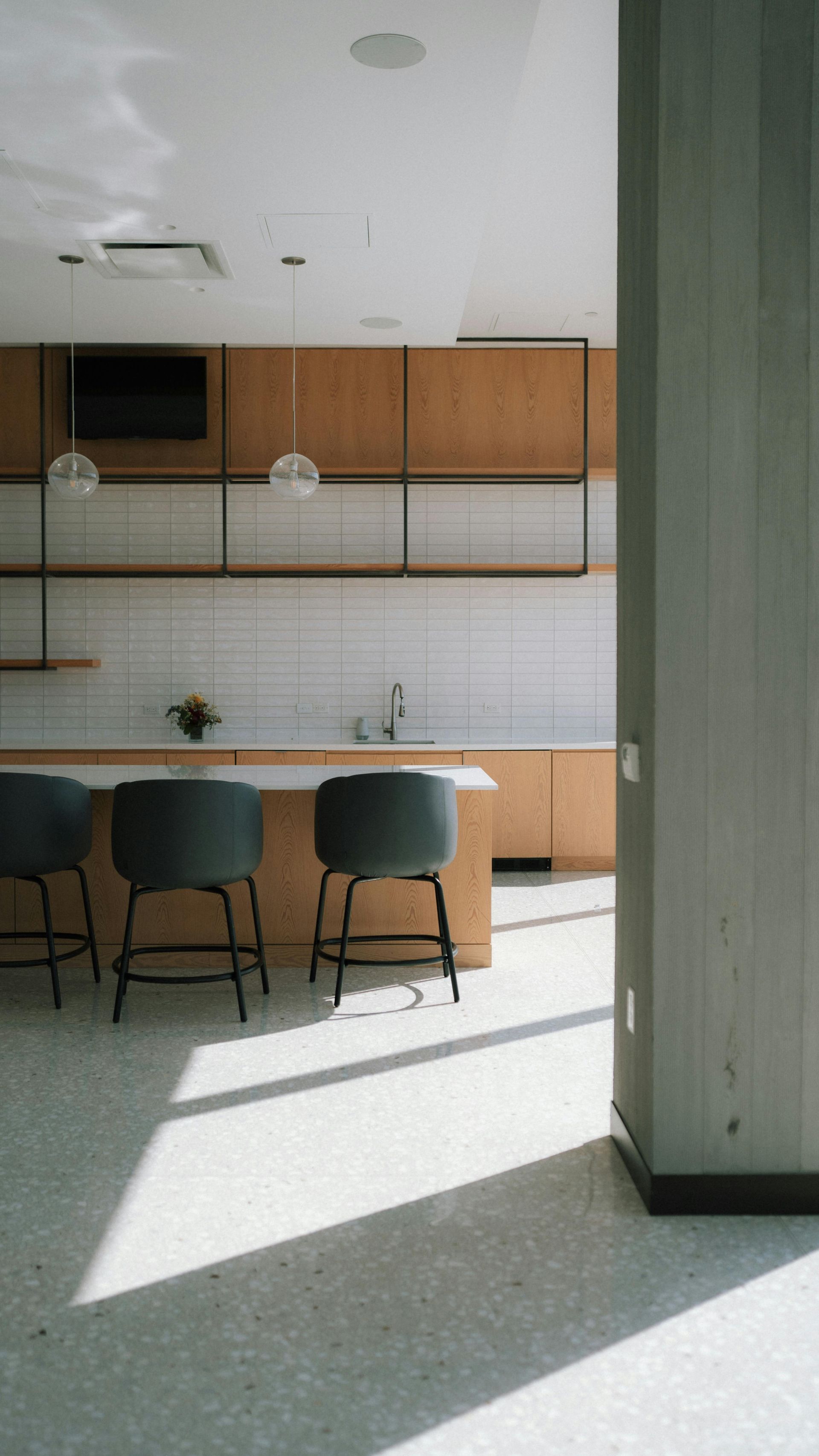
November 5, 2024
When you think of countertops, the kitchen is likely the first place that comes to mind. But countertops can serve as functional and stylish surfaces in many other areas of the home, providing durability, ease of cleaning, and an aesthetic upgrade to spaces beyond the kitchen. Here are some creative ways to incorporate countertops in your bathroom, home office, and more—adding both function and flair to your living space. 1. Elevate Your Bathroom with Luxe Countertops Bathrooms are the perfect place to add a touch of luxury with beautiful countertops. Materials like quartz and marble make excellent choices, as they bring both elegance and functionality to the space. Quartz, in particular, is resistant to moisture and stains, making it ideal for bathroom vanities where water and soap often cause issues. A durable countertop in your bathroom not only provides a sturdy surface for essentials but also makes cleanup easy. Consider a custom-designed quartz countertop that flows seamlessly into an integrated sink for a sleek, modern look. For those seeking a more natural or earthy vibe, granite and travertine countertops add a rustic feel to the bathroom and can be paired with wood accents for a spa-like atmosphere. With the right countertop, your bathroom can transform from a functional space into a retreat where style meets practicality. 2. Home Office Desks That Are Built to Last With more people working from home than ever, the demand for stylish and durable home office setups has skyrocketed. A custom countertop can be a fantastic desk surface, offering durability and a professional look that suits any home office. Materials like quartz and laminate are ideal for office settings—they’re scratch-resistant, smooth, and easy to clean, making them ideal for busy workspaces where you may use everything from coffee mugs to heavy office equipment. Choosing a countertop for your desk also lets you play with unique finishes and colors that can match the aesthetic of your home office. For a modern look, go with a thin, sleek quartz surface; if you prefer a more industrial feel, opt for concrete or butcher block. Either way, a durable, high-quality countertop as a desk surface will elevate your work environment and provide a comfortable and stylish workspace. 3. Laundry Rooms Made Functional and Chic Laundry rooms are often overlooked when it comes to design, but a high-quality countertop can change that. Adding a durable countertop in your laundry room gives you a sturdy, easy-to-clean surface for folding clothes, sorting laundry, and organizing supplies. Quartz and laminate are popular choices because they’re resistant to moisture and staining, making them perfect for an area where you might deal with detergents and spills. A sleek, light-colored countertop can make the laundry room feel brighter and cleaner, transforming it into a space that’s not only functional but enjoyable to use. 4. Customized Countertops for Unique Spaces Countertops can be added to various unique spaces, such as mudrooms, garages, and entryways. In a mudroom, a countertop can serve as a perfect spot for sorting mail, organizing bags, or placing items that need to stay by the door. Durable materials like granite or laminate are excellent for these high-traffic areas, adding both utility and style. In a garage, a durable countertop like concrete or butcher block can serve as a workbench surface, providing a practical workspace for home projects. Durable countertops can handle heavy tools and are resilient to wear, making them ideal for DIY spaces. At JB Countertops LLC, we believe countertops have endless potential. Whether you’re looking to enhance your bathroom, home office, or any other space, our team specializes in designing and installing beautiful, high-quality countertops that suit your unique needs. Let us help you bring the durability, style, and convenience of countertops beyond the kitchen and into every part of your home. Explore the possibilities with JB Countertops LLC—where your vision meets our expertise in every room!
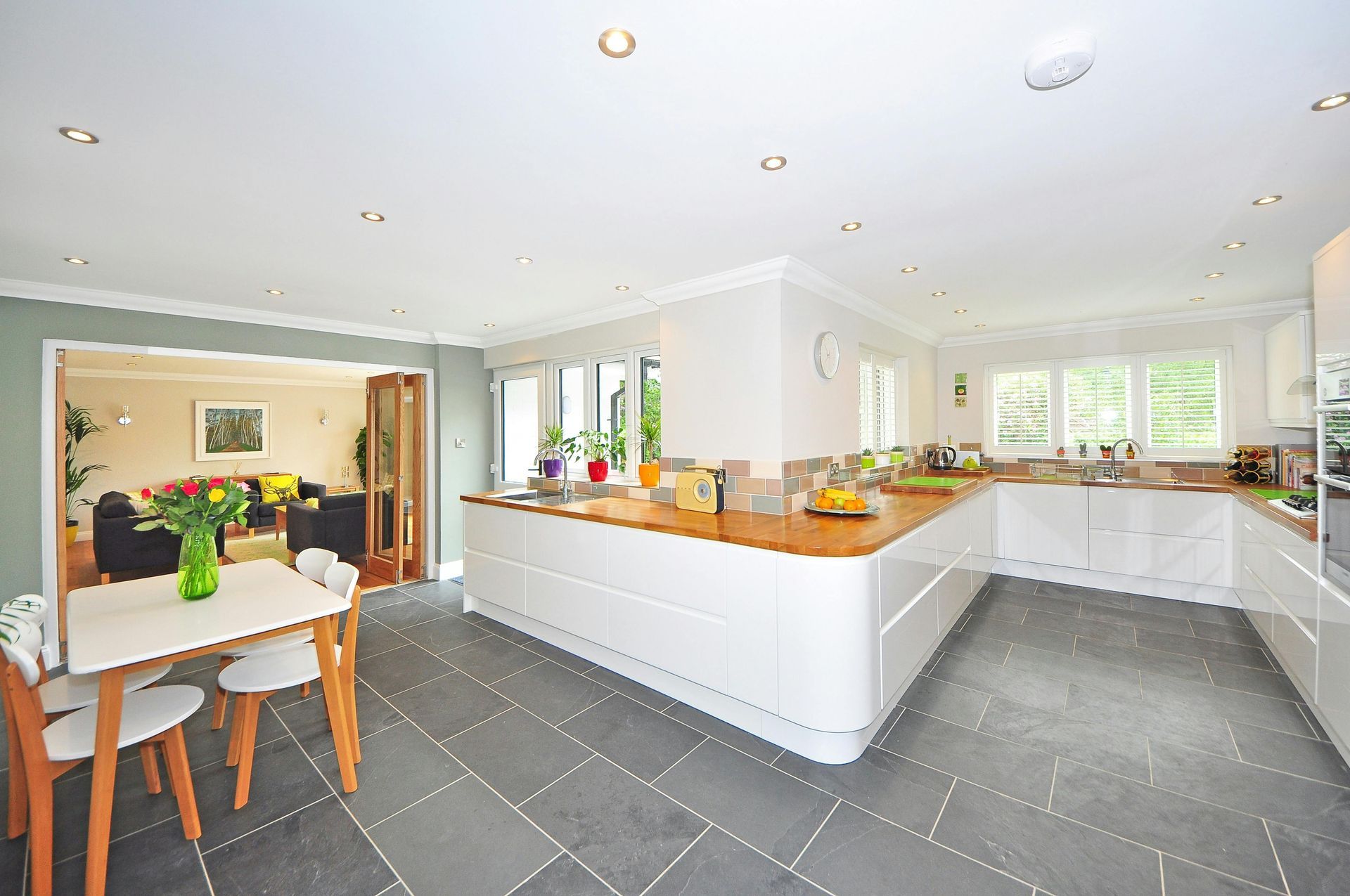
November 5, 2024
Chicago winters can be brutal, with freezing temperatures, heavy snow, and persistent humidity changes that affect not only the outside of a home but also its interior. The kitchen, a central gathering place for family and friends, is one area where winter wear and tear can take a toll. That’s why having durable countertops isn’t just a style choice for Chicago homeowners—it’s a necessity. Here’s why opting for high-quality, durable countertops can make all the difference in surviving the winter season. 1. Resistance to Temperature Fluctuations During the winter, Chicagoans crank up the heat indoors to combat the cold. This temperature shift can impact surfaces in the home, including countertops, particularly in homes with high indoor-outdoor traffic or open-concept layouts where the temperature fluctuates. Durable countertop materials like quartz and granite are less prone to expansion and contraction due to temperature changes, making them ideal for withstanding Chicago’s intense seasonal shifts. Unlike wood or laminate, stone materials resist warping and cracking, helping your kitchen surfaces stay intact and beautiful. 2. Low Maintenance for High Traffic Winter in Chicago means more time spent indoors. Kitchens tend to see more use during these months, from holiday cooking to weekend family meals. Countertops take a hit with constant use and potential spills from hot beverages, sauces, and other winter treats. Durable materials like quartz are non-porous, making them more resistant to stains, spills, and the buildup of bacteria. In contrast, porous surfaces like marble require more regular sealing to prevent stains, which may be difficult to keep up with during busy winter months. Investing in a low-maintenance, durable countertop ensures that you won’t be constantly worrying about surface stains or damage. 3. Scratch and Chip Resistance Whether you’re cooking hearty meals for the family or hosting gatherings, winter brings a higher likelihood of using heavy kitchen tools and dishes. Durable materials like granite, quartz, and porcelain are scratch- and chip-resistant, which means they can handle the wear and tear of meal prep, pot scrapes, and even the occasional drop. For Chicago homeowners, these countertops offer peace of mind and longevity, keeping your kitchen in great condition even with heavy winter use. 4. Protection Against Humidity Changes Chicago’s winter humidity levels can be surprisingly high, even indoors. This extra moisture in the air can damage less resilient countertops over time, particularly wood or other porous materials that absorb moisture and can warp or crack. Stone materials like quartz, granite, and porcelain are much better suited to high-humidity conditions, staying unaffected by changing humidity levels and resisting mold or mildew buildup, which can be a concern in homes with fluctuating winter moisture. 5. Durability Adds Value to Your Home Countertops are one of the most significant investments in a kitchen. High-quality, durable materials not only offer practical benefits but also add value to your home, an essential factor for Chicagoans looking to maintain or increase property values. Chicago’s real estate market is competitive, and kitchens are often a key selling point for buyers. Durable countertops enhance both the functionality and appeal of your kitchen, making your home more attractive in the market should you decide to sell. At JB Countertops LLC, we understand the demands of a Chicago winter and the importance of having durable, resilient surfaces that can withstand the season’s wear. We specialize in high-quality materials like quartz, granite, and porcelain, providing countertops that are as tough as they are stylish. If you’re ready to upgrade your kitchen with countertops that can handle the demands of Chicago winters, our team is here to help. Investing in durable countertops is a smart choice that will pay off season after season. Winter-proof your kitchen this year with JB Countertops LLC and enjoy a worry-free winter.
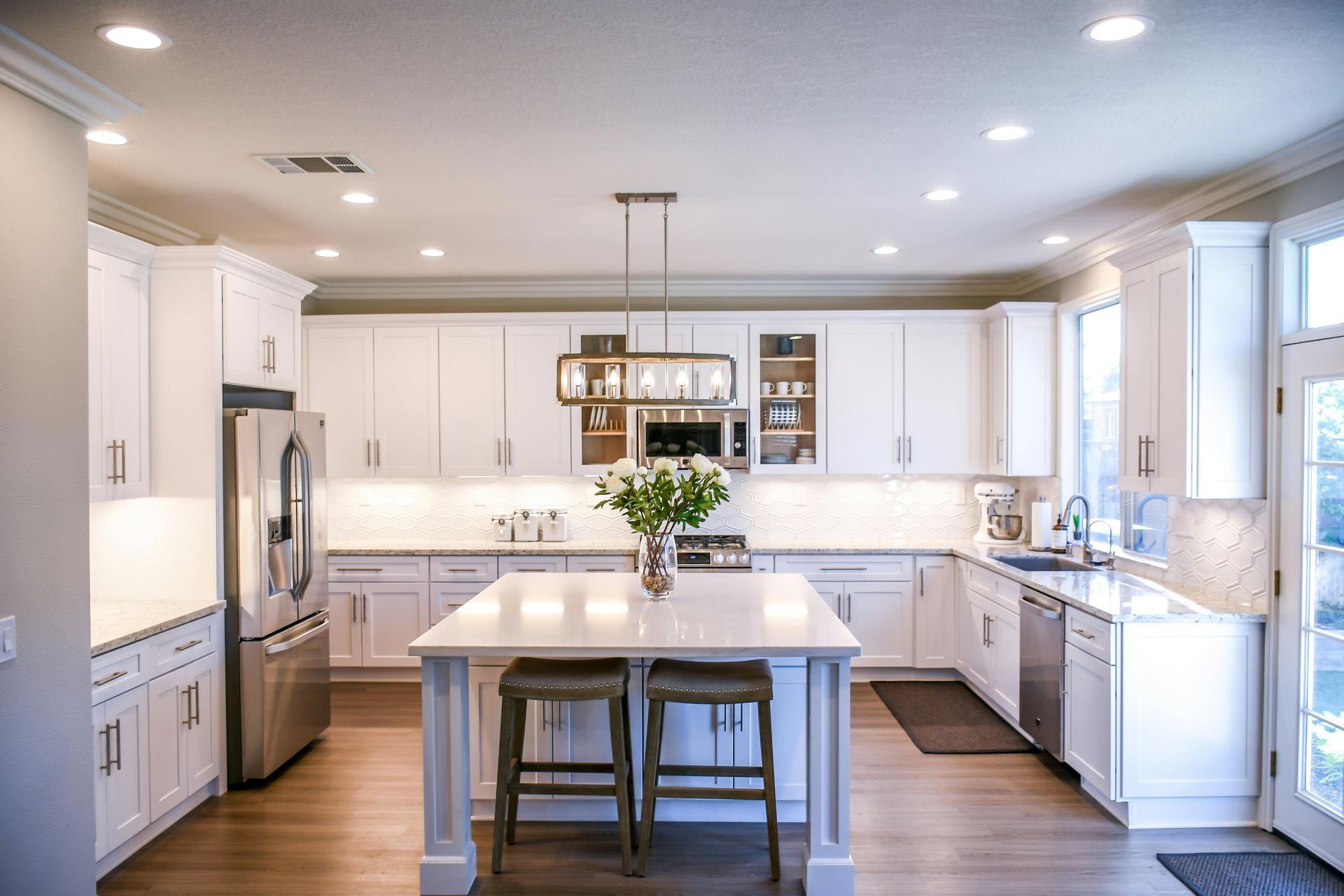
November 5, 2024
As Chicago homeowners embrace 2024, many are seeking to update their kitchens with modern, durable, and stylish countertops. The right countertop can completely transform a kitchen, adding both beauty and functionality. Whether you’re in a sleek high-rise downtown or a cozy home in the suburbs, here are the top countertop trends of 2024 that can suit any style and lifestyle. 1. Bold Veining for a Dramatic Statement One of the most popular trends this year is bold veining in materials like quartz and marble. Gone are the days of subtle patterns; 2024 is all about countertops with high-contrast veins that create a luxurious and eye-catching focal point. Bold veining works particularly well in minimalist or modern kitchens, giving them an edge and a touch of sophistication. Chicago homeowners can pair these striking countertops with dark cabinetry for a contemporary look, or with lighter colors to balance out the drama. 2. Earthy Tones and Natural Textures For those who prefer a more organic look, earthy tones like browns, beiges, and warm grays are making a comeback. These tones bring warmth to a kitchen, making it feel inviting and grounded—a welcome feature in a city known for its chilly winters. Textured countertops, such as honed granite or leathered quartz, add depth and interest while maintaining a natural look. This trend complements farmhouse, rustic, and traditional kitchen styles, which many Chicagoans favor for their timeless appeal. 3. Sustainable and Eco-Friendly Materials Sustainability is at the forefront for many homeowners, and countertops are no exception. This year, more people are opting for eco-friendly materials like recycled glass, reclaimed wood, and bamboo, which have a lower environmental impact and contribute to a greener home. Not only are these materials sustainable, but they also add unique character to any kitchen. With Chicago’s growing green initiatives, choosing eco-friendly countertops aligns with the city’s broader environmental goals. 4. Ultra-Thin Profiles for a Sleek Look Thin-profile countertops are a chic, modern choice that’s gaining popularity in 2024. Often seen in high-end designs, these countertops bring a minimalist, streamlined look to the kitchen. Thin quartz or porcelain surfaces work well in urban condos or lofts where space is at a premium, as they create a clean and contemporary vibe without overwhelming the room. Paired with sleek cabinetry, ultra-thin countertops are ideal for homeowners who love a minimalist aesthetic. 5. Mixed Materials for Customization A big trend in Chicago kitchens this year is the mixing of materials. Homeowners are choosing different surfaces for various parts of the kitchen, such as pairing marble on an island with butcher block on the perimeter counters. This approach creates visual interest and allows homeowners to customize their kitchens based on both style and function. For example, you might select a durable stone for cooking areas and a warmer wood for socializing areas. Mixed materials are perfect for eclectic kitchens, where creativity and personalization shine. 6. Integrated Sinks for Seamless Style Integrated sinks, where the countertop material flows directly into the sink, offer a seamless and sophisticated look. This design is both practical and stylish, making cleanup easier and creating a smooth, cohesive appearance. Integrated sinks are especially popular in modern and transitional kitchens where simplicity and clean lines are a priority. Ready to bring one of these 2024 trends into your Chicago kitchen? At JB Countertops LLC, we specialize in helping homeowners transform their kitchens with countertops that combine style, durability, and function. Whether you’re looking for bold veining, sustainable materials, or a sleek profile, our team can help you select the perfect countertop to match your taste and lifestyle. Make 2024 the year your kitchen becomes a stylish, functional space you love!
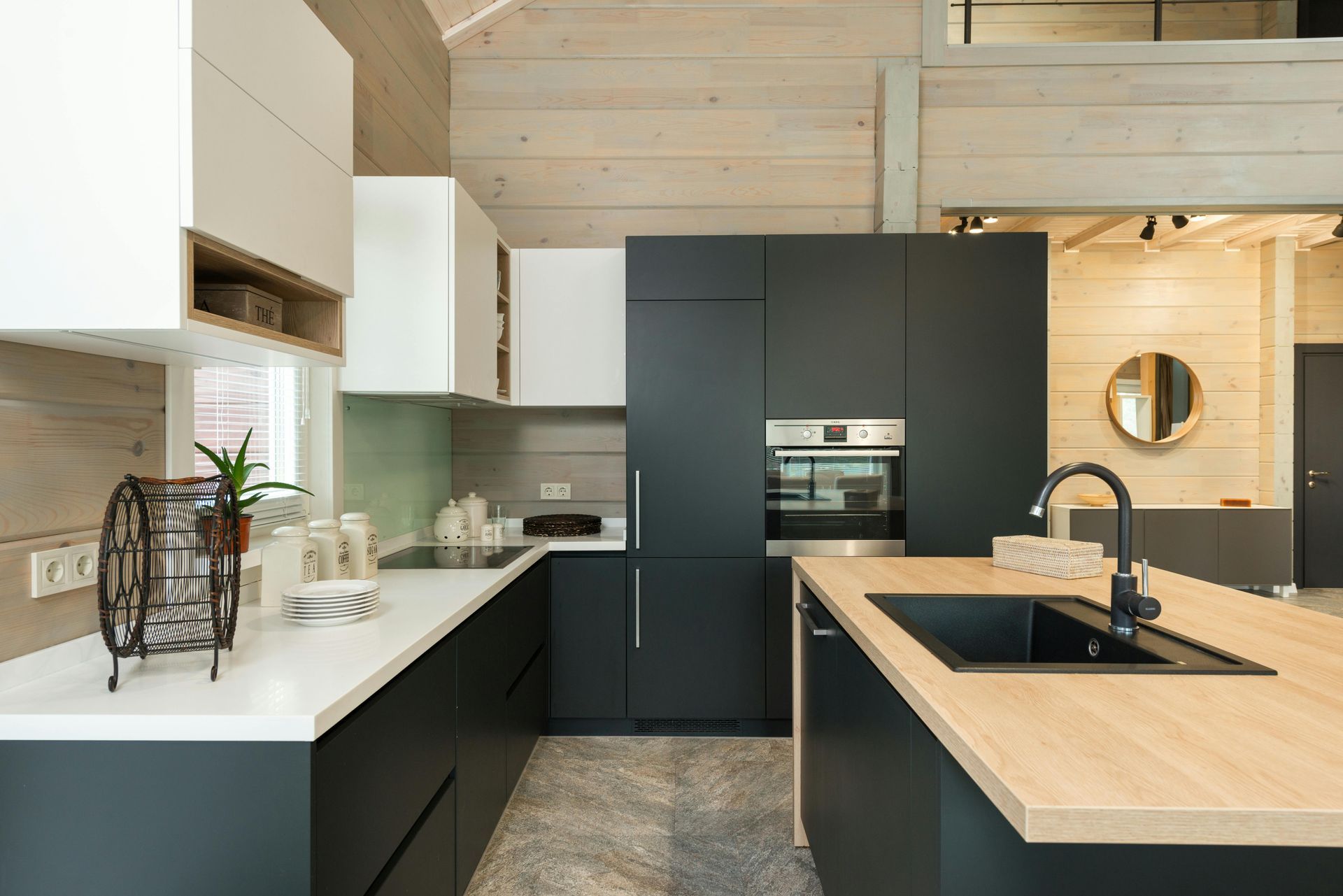
October 24, 2024
A kitchen remodel is an exciting project that can breathe new life into one of the most important spaces in your home. One of the key aspects of any kitchen renovation is replacing the countertops, which can transform the room’s aesthetic and functionality. As you prepare for a kitchen remodel in 2024, here’s what you need to know to ensure a smooth process and get the most out of your new countertops. 1. Planning and Budgeting The first step in preparing your kitchen for a remodel is to set a clear budget and plan. Countertop materials vary widely in price; options like laminate and butcher block are more affordable, while quartz, marble, and granite are more expensive. Setting a budget helps you choose the right material that balances cost with style and durability. Don't forget to factor in installation costs, which can vary based on the complexity of the project and the material chosen. In addition to budgeting, planning for the timeline is essential. Replacing countertops typically takes a few weeks from selecting the material to installation. Make sure to coordinate with your contractor and account for any potential delays, especially if you’re ordering custom or specialty materials. 2. Choosing the Right Countertop Material With new countertop trends emerging in 2024, consider materials that align with both your aesthetic preferences and lifestyle needs. For example: - **Quartz** is popular for its durability, low maintenance, and ability to mimic natural stones. - **Porcelain** is gaining traction for its heat resistance and versatility. - **Natural stones** like marble and granite remain timeless choices, offering unique patterns and textures. Be sure to visit a showroom or look at samples in person to get a sense of how the material will look in your kitchen. Think about factors like color, pattern, texture, and finish to complement your existing or planned kitchen decor. 3. Preparing Your Kitchen Space Before the installation begins, you’ll need to prepare your kitchen by clearing out cabinets and removing items from the existing countertops. Take down any fragile items, such as glassware or ceramics, from surrounding cabinets, as the installation process may involve some vibrations. If your current countertops have a backsplash that will also be replaced, discuss with your contractor whether it needs to be removed before installing the new countertop. You may also need to disconnect any plumbing fixtures, such as the sink and dishwasher, so it’s wise to arrange for a plumber if your contractor doesn't offer this service. 4. Installation Day: What to Expect On installation day, expect a fair amount of noise and activity. The installation team will start by carefully removing the old countertops, which may involve cutting and prying them away from the cabinetry. Once the old surfaces are out, the team will check the cabinets for levelness, as any unevenness can affect the installation of the new countertop. Depending on the material and the scope of the project, the installation itself may take several hours or even a full day. For natural stone countertops like granite or marble, there may be some onsite cutting and polishing to ensure a perfect fit. If you’re installing a heavy material, such as concrete or large slabs of stone, make sure the cabinets can support the weight or are reinforced accordingly. 5. Post-Installation Care and Maintenance After the new countertops are installed, there are a few steps to take before your kitchen is fully functional again. Allow any adhesives used during installation to set properly. If you’ve chosen a natural stone that requires sealing, make sure this is done promptly to protect the surface from stains. To keep your new countertops looking pristine, follow the recommended maintenance routine for the material. For example, quartz requires minimal upkeep, while granite and marble may need periodic resealing. Preparing for a 2024 kitchen remodel, especially when replacing countertops, involves careful planning, choosing the right materials, and coordinating the installation process. By understanding what to expect and taking the right steps, you can ensure a successful renovation that enhances both the beauty and functionality of your kitchen. Whether you’re opting for classic granite, durable quartz, or the latest porcelain trend, your new countertops will be a lasting investment that adds value and style to your home.
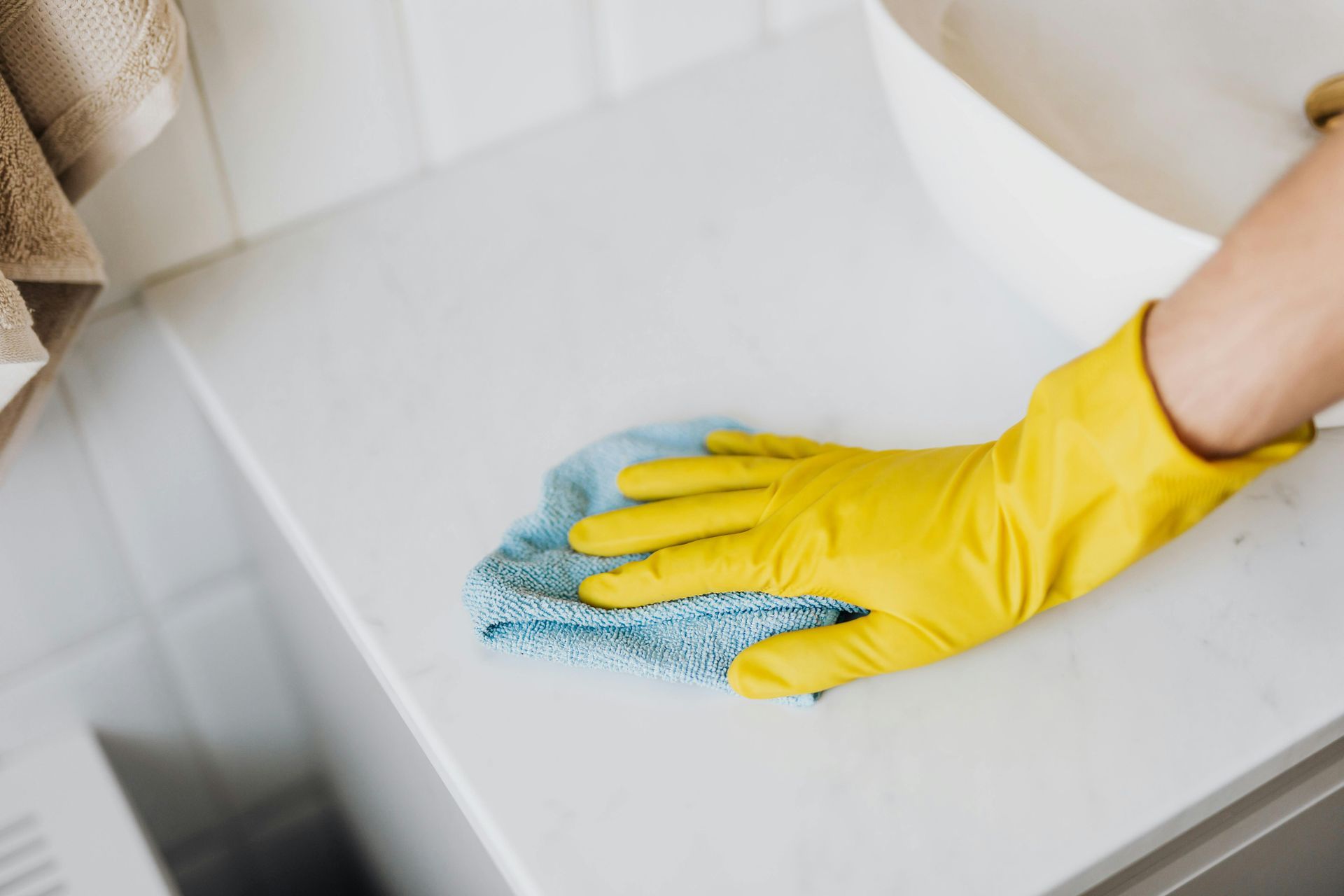
October 24, 2024
As homeowners look to update their kitchens and bathrooms in 2024, the debate between quartz and porcelain countertops is heating up. While quartz has been a popular choice for years due to its durability, beauty, and low maintenance, porcelain is emerging as a strong contender with some unique advantages. Let’s take a closer look at how these two materials compare in terms of aesthetics, durability, maintenance, and cost, helping you decide which might be the best fit for your Chicago home. 1. Aesthetics **Quartz** is an engineered stone made from natural quartz crystals, resin, and pigments, allowing for a wide variety of colors and patterns. It can mimic the look of natural stones like marble or granite, but with a more consistent appearance. Quartz is known for its smooth, non-porous surface and offers various finishes, from polished to matte. **Porcelain**, on the other hand, is made from clay, minerals, and kaolinite, which are baked at extremely high temperatures. This process creates a highly durable surface that can be printed with patterns mimicking natural stone, wood, or concrete. Porcelain’s ability to replicate natural materials, combined with its thin and lightweight structure, gives it a sleek and modern appearance that's perfect for minimalist or contemporary designs. 2. Durability Both quartz and porcelain are highly durable, but there are some differences. **Quartz** is known for its scratch and chip resistance, making it suitable for high-traffic kitchens. However, it’s sensitive to extreme heat, and placing hot pots directly on the surface can cause damage over time. **Porcelain**, by contrast, is even more resistant to heat due to the high temperatures it undergoes during manufacturing. It’s also more resistant to scratches, making it a great choice for outdoor kitchens or homes with heavy use. The thin structure of porcelain slabs makes them less prone to cracking compared to thicker stone slabs. 3. Maintenance Quartz is a **low-maintenance** option that doesn’t require sealing and only needs regular cleaning with mild soap and water. Its non-porous nature means it resists staining and bacterial growth. Porcelain is similarly **low-maintenance**, with the added benefit of being impervious to UV rays, which makes it suitable for outdoor use without worrying about fading. It is also non-porous, so it resists stains, bacteria, and mold. 4. Cost **Quartz countertops** typically cost between $50 and $100 per square foot, including installation. The price can vary depending on the design and quality of the quartz used. **Porcelain countertops** are generally priced from $60 to $120 per square foot, which puts them in a similar range to quartz. However, their higher heat resistance and outdoor capabilities might offer added value for some homeowners. In 2024, both quartz and porcelain provide excellent options for countertops, with each material offering unique benefits. Quartz remains a solid choice for its variety of patterns and colors, while porcelain's heat resistance and UV stability make it a compelling new contender, especially for outdoor applications. Choosing the right countertop comes down to balancing aesthetics, function, and budget to suit your home’s needs.
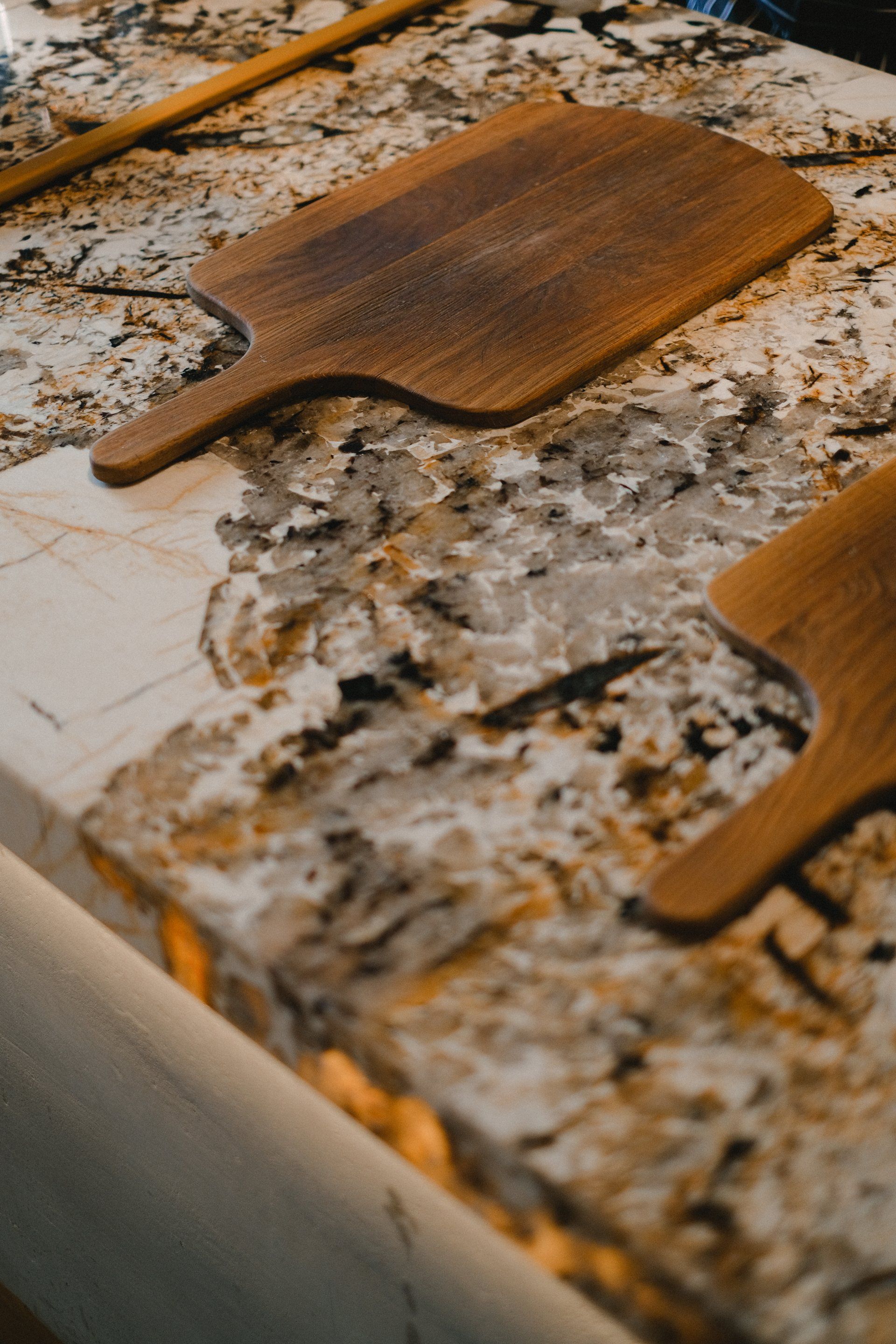
October 24, 2024
When choosing the perfect countertop for your kitchen or bathroom, quartz, marble, and granite are three of the most popular materials. Each has its own distinct advantages and aesthetic qualities that can complement different home styles and budgets. Understanding the differences in appearance, durability, maintenance, and cost will help you make an informed decision for your home in Chicago. Here’s a comprehensive comparison of quartz, marble, and granite countertops to help you determine which one suits your needs best. 1. Appearance Quartz Countertops Quartz is an engineered stone made from crushed quartz crystals combined with resin and pigments. This manufacturing process allows for a wide range of colors and patterns, making quartz incredibly versatile in terms of design. Whether you prefer a uniform look or one that mimics the natural veining of marble or granite, quartz can achieve that aesthetic. It offers consistency in color, making it ideal for homeowners who want a contemporary, seamless look. Marble Countertops Marble is a natural stone known for its luxurious and elegant appearance, with unique veining that adds character and sophistication to any room. Each marble slab is one-of-a-kind due to the natural variations in veining and coloration, providing a truly unique surface for countertops. Its classic beauty is often associated with upscale, high-end homes. However, some homeowners may prefer quartz over marble if they’re looking for uniformity in design. Granite Countertops Granite, like marble, is a natural stone and comes in a variety of colors and patterns. Its appearance is characterized by speckled or mottled patterns, offering a more textured look. Granite’s natural variations make each slab unique, which adds a distinctive touch to kitchen or bathroom spaces. Its color palette ranges from subtle earth tones to bold and dramatic hues, making it versatile for both traditional and modern settings. 2. Durability Quartz Quartz countertops are incredibly durable due to their engineered composition. The addition of resin makes quartz non-porous, meaning it resists stains and doesn’t require sealing. It’s also resistant to scratches and heat, making it an ideal choice for busy kitchens. However, it’s worth noting that while quartz is resistant to heat, placing hot pots and pans directly on the surface may still cause damage over time. Marble While marble offers timeless beauty, it’s considered a softer and more porous material than quartz and granite. It can scratch more easily and is prone to etching when exposed to acidic substances like lemon juice or vinegar. Marble countertops require more care to maintain their appearance, including regular sealing to protect against staining. Despite these challenges, marble is still a desirable choice for homeowners who prioritize aesthetics over resilience. Granite Granite is known for its durability and strength, making it a popular choice for kitchen countertops. Its natural hardness resists scratches and heat, and with proper sealing, granite is also resistant to stains. While it does require periodic sealing to maintain its resistance to liquids, granite can withstand heavy use in busy households. Its resilience makes it a practical option for both kitchens and bathrooms. 3. Maintenance Quartz Quartz countertops are low-maintenance, requiring only basic cleaning with soap and water. Since they’re non-porous, there’s no need for sealing or special cleaning products. This ease of maintenance makes quartz an attractive option for busy homeowners who don’t want to worry about constant upkeep. Marble Marble requires more attention to keep it looking its best. It should be sealed regularly to prevent stains, and it’s advisable to use mild, pH-balanced cleaners to avoid damaging the surface. Spills should be wiped up promptly, especially if they’re acidic, as these can cause etching or discoloration. Granite Granite also requires sealing, but not as frequently as marble. A well-sealed granite countertop can be resistant to stains and spills for a year or more before resealing is necessary. Routine cleaning with warm water and mild soap is generally sufficient for maintaining granite surfaces. 4. Cost Quartz The cost of quartz countertops generally falls in the mid-to-high range, typically between $50 and $100 per square foot, including installation. While it may be more expensive than some granite options, its durability and low maintenance often justify the price. Marble Marble is considered a luxury material and can be more expensive, ranging from $60 to $200 per square foot. The higher cost reflects its beauty and status as a premium natural stone, as well as the additional maintenance required. Granite Granite offers a wide range of price points, from $40 to $150 per square foot, depending on the type and rarity of the stone. Some exotic granite slabs can be more expensive, while common varieties can be more budget-friendly. Choosing between quartz, marble, and granite countertops depends on your priorities. Quartz is perfect for those who value durability and low maintenance, while marble is ideal for homeowners who prioritize aesthetic luxury and don’t mind a little extra upkeep. Granite offers a balance of natural beauty, durability, and affordability. Consider your lifestyle, design preferences, and budget when making your choice to ensure your countertops will add value and style to your Chicago home for years to come.

October 15, 2024
When considering a quartz countertop for your kitchen or bathroom, one common question that arises is whether or not it needs to be sealed. Unlike natural stone countertops like granite and marble, which require regular sealing to protect against stains and moisture, quartz countertops have different characteristics that make sealing unnecessary. What Makes Quartz Different? Quartz countertops are engineered stone surfaces made from a blend of natural quartz crystals, resins, and pigments. The manufacturing process creates a non-porous surface, meaning it doesn’t have small pores or holes that can absorb liquids, dirt, or bacteria. This non-porous nature is one of the key advantages of quartz and makes it more resistant to staining and easier to clean than natural stones. Why Sealing Isn’t Necessary for Quartz Since quartz countertops are non-porous, they do not need to be sealed. The resins used during the manufacturing process create a protective barrier that prevents liquids, oils, and other substances from penetrating the surface. In contrast, natural stones like granite and marble have pores that need to be sealed periodically to prevent staining. With quartz, this step is not required, making it a low-maintenance option for homeowners. The Benefits of Non-Porous Surfaces The non-porous nature of quartz countertops offers several advantages: 1. **Stain Resistance:** Quartz naturally resists staining from common substances like coffee, wine, and oils, making it a great choice for busy kitchens and bathrooms. 2. **Hygiene:** The lack of pores means that bacteria and germs cannot penetrate the surface, making quartz countertops more hygienic compared to natural stone surfaces. 3. **Low Maintenance:** Because there is no need for regular sealing, quartz countertops are easy to maintain. Simple cleaning with soap and water is usually sufficient to keep them looking great. What to Avoid With Quartz Although quartz countertops are durable and resistant to many forms of damage, there are some precautions to keep in mind. Avoid using harsh chemical cleaners, as they can break down the resin and dull the surface over time. Additionally, while quartz is heat-resistant, it’s not heatproof, so it’s best to use trivets or hot pads for hot pots and pans. In summary, quartz countertops do not need to be sealed due to their non-porous nature. The built-in stain resistance, low maintenance, and hygienic surface make quartz a convenient and popular choice for homeowners looking for a durable countertop material.
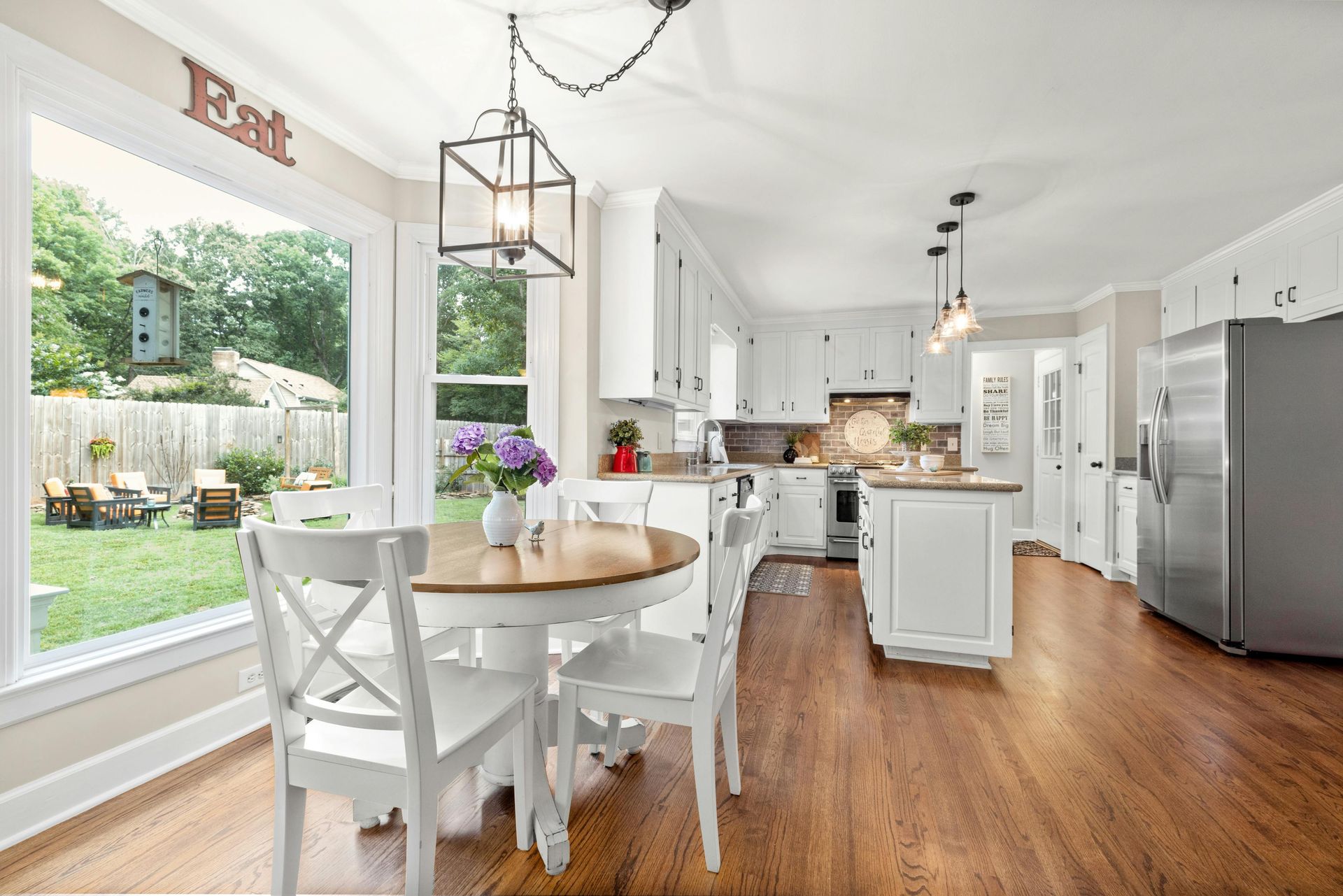
October 15, 2024
Choosing the right material for an outdoor countertop is crucial for ensuring durability, functionality, and aesthetics. Outdoor countertops face exposure to various elements such as sunlight, rain, and temperature fluctuations, making it essential to select a material that can withstand these conditions while still maintaining its appearance and integrity. Here’s a look at some of the best materials for outdoor countertops and what makes them ideal choices. 1. Granite Granite is one of the most popular choices for outdoor countertops due to its natural strength and durability. It is resistant to heat, scratches, and UV rays, making it well-suited for outdoor use. Granite also comes in a variety of colors and patterns, allowing you to find a style that matches your outdoor space. However, granite should be sealed properly to prevent staining and moisture absorption. With regular sealing, it can withstand harsh weather conditions and remain in great shape for years. **Pros:** - Highly durable and heat-resistant - Scratch-resistant - Available in various colors and patterns **Cons:** - Requires regular sealing - Can be expensive compared to other materials 2. Concrete Concrete countertops have gained popularity due to their industrial look and versatility. They can be customized in terms of color, texture, and finish, making it easy to achieve a unique design. Concrete is durable and can handle exposure to various weather conditions. However, it is porous and prone to staining, so sealing is necessary to protect the surface. The downside is that concrete can develop hairline cracks over time due to temperature changes, but this can often be minimized by using fiber reinforcement or adding sealers with flexible properties. **Pros:** - Customizable in terms of color and texture - Extremely durable when properly sealed - Offers a unique, industrial aesthetic **Cons:** - Prone to cracking over time - Requires regular sealing 3. Quartzite Quartzite is a natural stone that offers the beauty of marble but with the strength of granite. It is resistant to UV rays, which prevents fading when exposed to sunlight. Quartzite is also scratch-resistant and withstands heat, making it an ideal choice for outdoor kitchens. However, like granite, it should be sealed periodically to prevent staining. While more expensive than other options, quartzite's combination of elegance and durability makes it worth considering for an outdoor countertop. **Pros:** - UV and heat-resistant - Scratch-resistant - Marble-like appearance with higher durability **Cons:** - Expensive - Needs sealing to prevent stains 4. Soapstone Soapstone is a non-porous natural stone that is highly resistant to stains and heat, making it a good choice for outdoor kitchens. It has a smooth texture and typically comes in darker shades of gray with subtle veining. Soapstone weathers naturally, developing a patina over time that adds to its charm. It does not require sealing, although regular oiling can enhance its appearance. The main drawback is that soapstone can be easily scratched and chipped, but these imperfections can often be sanded out. **Pros:** - Non-porous and stain-resistant - Heat-resistant - Develops a beautiful patina **Cons:** - Prone to scratches and chips - Limited color options 5. Stainless Steel Stainless steel is an excellent choice for a modern, sleek outdoor countertop. It is resistant to heat, stains, and rust, making it highly durable in various weather conditions. Additionally, stainless steel is easy to clean and maintain. However, it can get hot in direct sunlight and may show fingerprints and smudges easily. It is also more expensive than some natural stone options, but for those seeking a contemporary look, it offers unmatched durability. **Pros:** - Heat, stain, and rust-resistant - Easy to clean and maintain - Modern appearance **Cons:** - Can become hot in direct sunlight - Shows fingerprints easily Choosing the best material for an outdoor countertop depends on your specific needs, budget, and design preferences. Granite, quartzite, and soapstone are excellent natural stone options for those looking for beauty and durability, while concrete and stainless steel provide unique aesthetics and functional benefits. Regardless of the choice, proper maintenance and sealing will ensure your outdoor countertop remains in great condition for years to come.
Tell us about your next project idea
JB COUNTERTOPS, LLC | Copyright 2023 | All Rights Reserved | Website created by North Shore Web Services